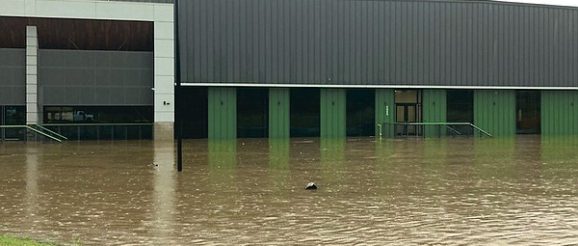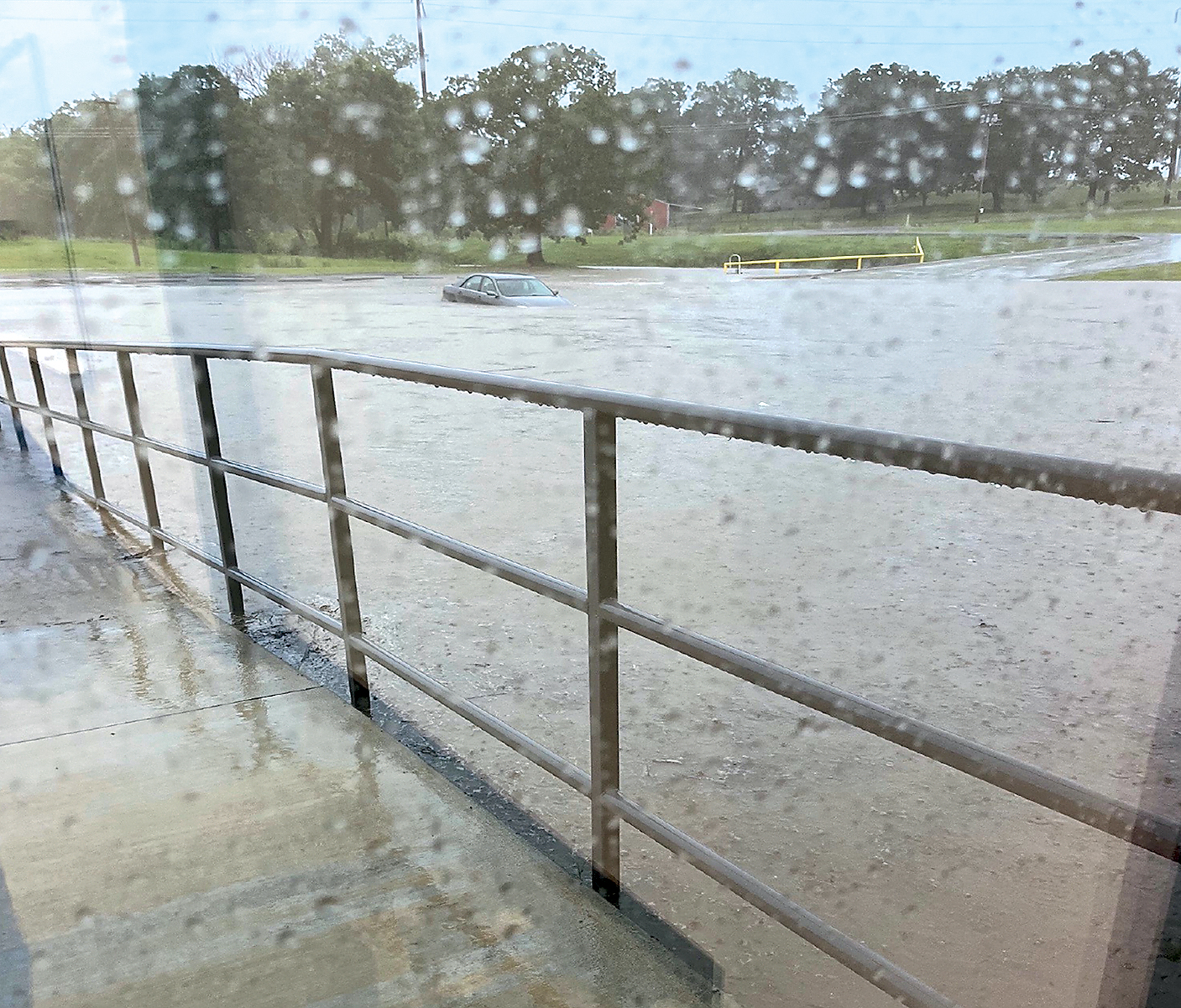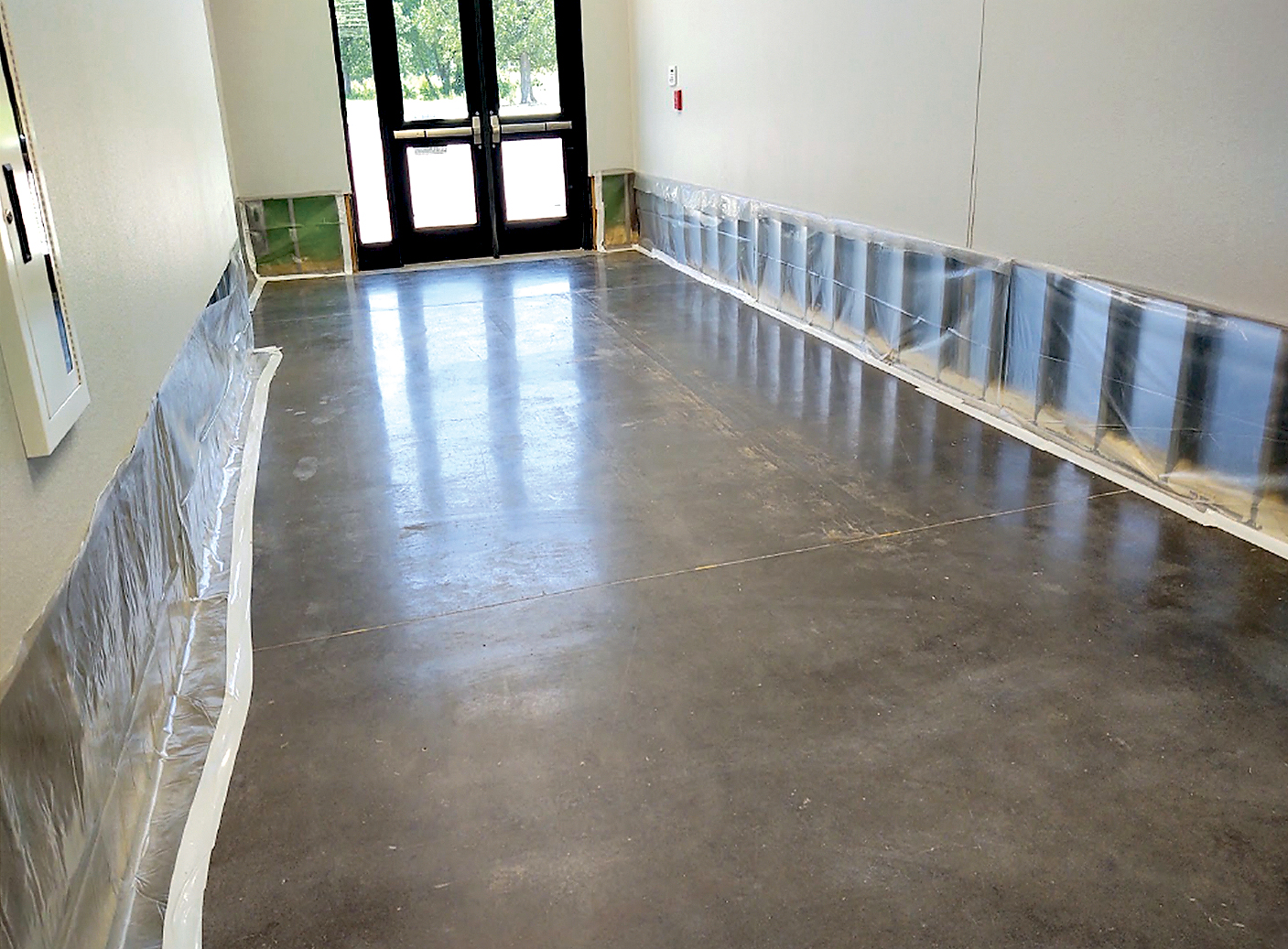Peak Innovation Center receives flood damage from June downpour

FORT SMITH — The Peak Innovation Center received water damage due to the torrential rain last month, totalling unknown amounts of damage for the School District.
Shawn Shaffer, executive director of facility operations, gave the timeline of events at the School Board meeting Monday . He said about noon June 7, he was notified the center’s parking lot was flooded with a custodian’s car under water.
Shaffer said students were quickly moved about a mile away to Barling Elementary School and their parents were notified. He said by the time he entered the facility, at 5900 Painter Lane, water had entered about 15 to 20 feet along the majority of the north side of the facility, and 20 to 30 feet on the east side.
The district had several companies working to address the flooding, including Turn Key Construction Management, Halff Associates and Servpro. It was determined a pipe had failed on the north wall and caused a category two intrusion, while plywood forms broke and got into and obstructed the drain pipes, causing a category three intrusion.
Scott Tucker, a Servpro production manager, explained a category two intrusion is caused by rainwater coming from overhead, while category three is rising water that could contain other material. He said due to the category three, any porous items in contact with the floodwater — including drywall and insulation — need to be replaced.
“Any time you have water levels that rise and intrude the building from the exterior, we have no way to know — there could be pesticides, herbicides, it could be contaminants from 3 miles away. There could be fecal matter or other bacteria that entered in from other storm drains or other sanitary sewers. So we have no idea what is involved in that,” he said.
Shaffer said the district is looking at creating a 100-year flood plan for the center, which could include some or all of the following: a detention pond, a bypass system, moving of roof drains to minimize contributing drainage basins and emergency overflow.
According to the Federal Emergency Management Agency, a 100-year flood plan indicates that flooding in Peak has a 1% chance of equalling or exceeding the event in June.
“If projected accurately, 100 year floods will rarely be experienced,” a FEMA training document states. “It should be noted that the majority of floods consist of lesser frequency events such as one year, five year, or ten year floods. It is never the case that an area experiences either no flooding or only 100 year flooding.”
The new center opened to students in late March and is a collaboration between the School District and the University of Arkansas-Fort Smith. It serves roughly 280 students from 22 school districts across Crawford, Franklin, Johnson, Logan, Scott and Sebastian counties through the university’s Western Arkansas Technical Center program.
The center houses courses for automation and robotics, computer integrated machining, electronics technology and industrial maintenance, emergency medical responders, medical office assistants, network engineering and unmanned aerial systems. It’s the last of the district’s Vision 2023 plan projects to be completed, which were paid for through a 5.558-mill property tax increase voters approved in May 2018 generating roughly $121 million.
Several School Board members brought up concerns about whether the area had a history of flooding, and if so, to what point and whether this was considered before construction.
Dalton Person, Zone 5 board member, noted the board discussed the area’s topography, whether the downhill slope would cause under slab moisture and how that could be mitigated.
“Hindsight being 20/20, we now stand at a situation where if we were to fully consider outside of just the under slab, this situation may not have been completely avoidable, but it certainly could’ve been mitigated, I think,” Person said. “Would you agree with that?”
“The first design of all of it was the 25-year plan,” Shaffer said. “We felt very confident with the data that we were provided that our drainage system would meet it. But unfortunately, we broke records. Maybe not the records we want to break here in Fort Smith. With that, I can’t remember the date of when it rained that much. So now we’re going to look at a 100-year plan.”
“We put multimillion-dollar equipment in a building, and we were worried about escorting staff and admin and students to safety,” Zone 4 board member Talicia Richardson said. “And thankfully everyone was moved quickly and timely and safely. But what happened? We should not be having a discussion on a building that’s been there for the amount of time that it’s been there, even though this is record rain.”
Shaffer said more research is needed to see exactly what happened, as well as what solutions the board can decide on and how much that will cost. He said the center is still usable and the district plans to have the building fixed by the time students return in August.
Superintendent Terry Morawski reiterated that the rain was a historic event and the district had a blocked drain, so researching ideas under normal conditions will help the board decide on a solution.
“So just looking for further guidance and direction so we can bring it back to another meeting these solutions, but with the data as well, because otherwise we’re making guesses up here,” he said.
 A car sits in flood water at the parking of the Peak Innovation Center on June 7 after rain fell in Fort Smith. The center, at 5900 Painter Lane, had just opened in March. The district’s School Board on Tuesday were given an update on work to repair water damage and efforts to prevent it in the future. (Courtesy Photo/Fort Smith School District)
A car sits in flood water at the parking of the Peak Innovation Center on June 7 after rain fell in Fort Smith. The center, at 5900 Painter Lane, had just opened in March. The district’s School Board on Tuesday were given an update on work to repair water damage and efforts to prevent it in the future. (Courtesy Photo/Fort Smith School District) Damaged drywall has been removed and awaits repair at the Peak Innovation Center after it flooded June 7 after rain fell in Fort Smith. The center, at 5900 Painter Lane, had just opened in March. The district’s School Board on Tuesday were given an update on work to repair water damage and efforts to prevent it in the future. (Courtesy Photo/Fort Smith School District)
Damaged drywall has been removed and awaits repair at the Peak Innovation Center after it flooded June 7 after rain fell in Fort Smith. The center, at 5900 Painter Lane, had just opened in March. The district’s School Board on Tuesday were given an update on work to repair water damage and efforts to prevent it in the future. (Courtesy Photo/Fort Smith School District)